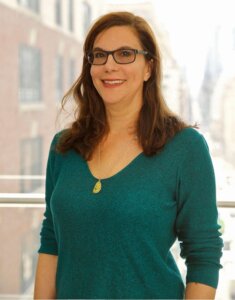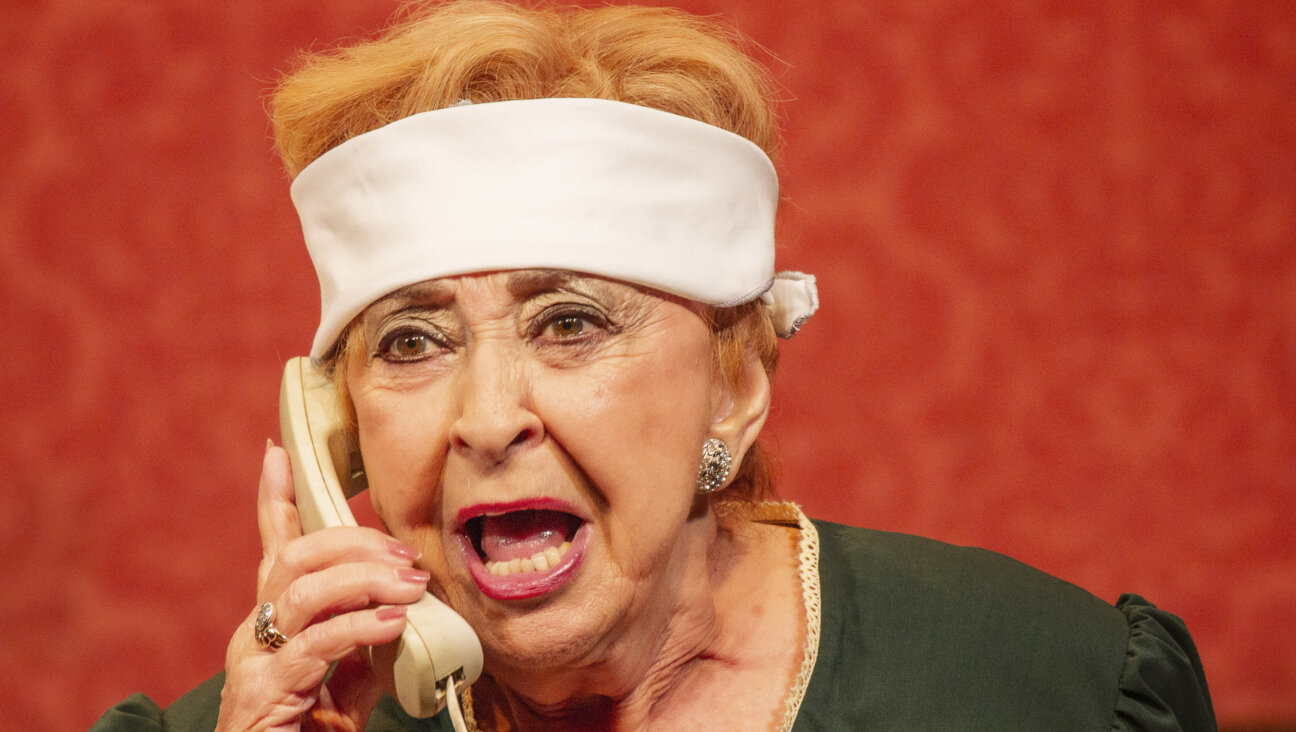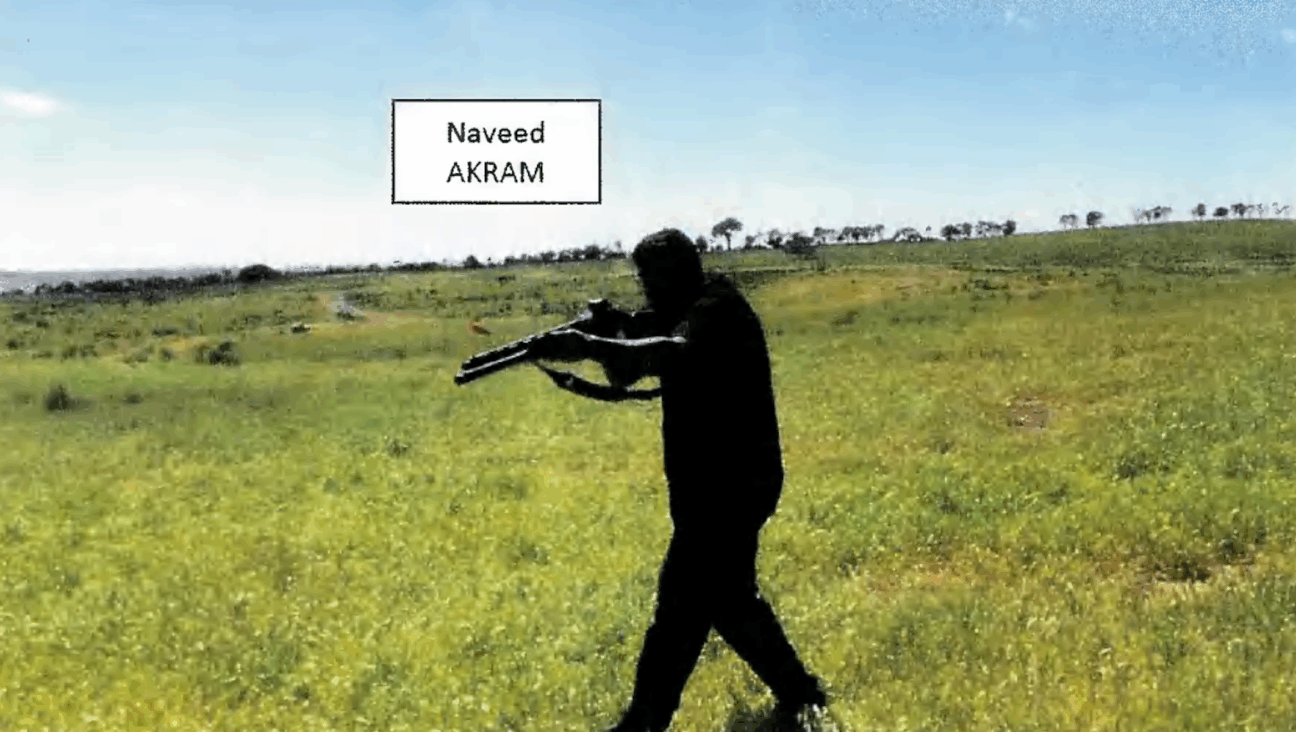Happy 100th Birthday to Mad Magazine’s Al Jaffee

Image by Marissa Scheinfeld
Editor’s Note: This article was published originally on February 21, 2016. We are revisiting it on the occasion of Al Jaffee’s 100th birthday.
On a snowy February afternoon, Al Jaffee, my childhood hero, invited me into his well-lit studio in Midtown Manhattan. The walls were covered with his drawings, images from Mad Magazine and a photo of Stephen Colbert’s homage to Jaffee on his television show. I wanted to talk to Jaffee about the relationship between Mad and Jewish culture and I was struggling to contain my excitement. In the 1970s and 1980s, when I was growing up in Newton, Massachusetts, everyone I knew obsessively read, shared and discussed Mad Magazine, and my brothers and I would always fight over who got to do the famous Mad Fold-In. Old copies of Mad were hoarded and new copies were bought at the newsagent in Newton Center. On Passover visits to our grandparents in Brooklyn, my brothers and I would use our afikoman money to rush down and buy the most recent copy from the magazine stand on Prospect Avenue. Yes, occasionally we would buy Cracked magazine as well, but we always considered that to be a second-rate version of the original. When we read Mad, it seemed to speak directly to us in our own language and it was a punchy alternative to boring suburban life.
As a kid, I was unaware that one reason Mad seemed so familiar was because most of the writers and cartoonists came from a demographic I knew well: New York, Jewish, left wing. Today, teens have a vast assortment of online and print choices for satiric takes on current events, but for us, the choice was basically limited to Mad and comic books. For an entire generation, Mad was one of the most central factors in shaping our understanding of the “adult” world.
Jaffee is a sprightly 94-year-old with sparkling eyes, a deep voice and the energy of someone 20 years younger. He still wakes his wife in the middle of the night with fresh ideas for covers or cartoons, and spends his days creating new pieces for Mad. Jaffee, who started working at Mad in 1955 and has been drawing the Fold-Ins on the final page for the last 52 years, is the magazine’s longest-lasting and most important contributor. He has also created countless ridiculous inventions for things such as improved drink cans and cigarettes to help you stop smoking, as well as Mad’s “Snappy Answers to Stupid Questions.”
“So what is it you want to know?” Jaffee asked me as I stood next to his big draftsman’s table.
I explained that I was working on a book about Mad and Jewish culture, so my first question was the obvious one: Why was there so much Yiddish in Mad?
“Well, first of all, because I tend to think in Yiddish, and Yiddish conveys humor better than English.”
“You still think in Yiddish then?” I asked.
“It’s narishkeit, but I still do,” he said with a chuckle.

In Al Jaffee's Studio: Jaffee has been working for Mad since 1955. Image by Marissa Scheinfeld
As a child, Jaffee lived for seven years in a shtetl in Lithuania. He was born in America, but his homesick mother took her four sons back to Eastern Europe for most of 1927 through 1933, and during that time, he lived much of his daily life in Yiddish. Yet, as he explained, upon returning to New York at 12, he switched back to English so his “intellectual Yiddish is only up to the age of 12.”
Jaffee explained to me that the two main architects of Mad during the first decade, the editor Harvey Kurtzman, and the artist (and his best friend) Willie Elder, had both grown up in New York families where their parents spoke and argued in Yiddish. For them, Yiddish was the inherently funny language that their parents would use to tell secrets and swear. While Jaffee was fluent in Yiddish, Kurtzman and Willie were not. According to Jaffee, Willie “didn’t know any Yiddish, and his parents would be arguing and all he would hear was a stream of funny words, and he would pick up the curse words his parents were throwing at each other in anger.” As a result, the Yiddish Kurtzman and Elder used during Mad’s first decade was based on finding the funniest-sounding words to evoke their parents’ humorous cut downs.
For example, the iconic Mad word furshlugginer was derived from the Yiddish word shlogan (to hit), while the meaning of the word potrzebie has been debated by Mad readers and academics for years. The word was first introduced in the Letters to the Editors section called Mad Mumblings in response to a query from a soldier (many if not most letters during the early 1950s were from men in the military ): “Please tell me what in the world ‘Furshlugginer’means. – Larry E. Lengle E.M.F.N – c/o F.P.O, New York, New York.” The answer from the editors to this was “It means the same as Potrzebie. –ed.”
The adamant refusal of the editors to explain the made-up word became a running joke. Today, Mad scholars theorize that potrzebie was in fact based on a Polish word that Kurtzman discovered on a jar of aspirin. According to Jaffee, though, this is not the case: “There was an expression in Lithuania when I was a kid — “putz-rebbe.” Harvey must have heard that. Putz is genitals and it is applied as an insult to the rebbe. It’s like saying, ‘Oh that stupid teacher’ or ‘putz-rebbe.’”
In fact, as Jaffee explained to me, much of the humor in Mad was deeply Jewish because it was based on satire created by a community that saw itself as not having much power and which used the jokes to take down those who “had it made,” i.e., rabbis, parents and, later, the rich and powerful. As he explained it, being a Jewish kid in the shtetl who was constantly hungry, “your only revenge is to expose and make fun of the frailties of the big shots and the ‘better-than-thou’ people. We made fun of our rabbis. Some of it was a bit raw and mean spirited, especially the comments about the personal habits of the rabbi when he went to the outhouse and defecated all over the board. This is the stuff that makes you feel equal [to] or better than they are. So going after the wealthy is such a release when you are barely getting by.”
Revisiting Mad as an adult, I was stunned to see the constant use of Yiddish, particularly during the first decade. In Mad’s first issue, there was a story entitled “Hoohah!” a transliterated Yiddish term for “a big to-do,” and the Yiddish/Hebrew term “ganef” (thief ) was employed in a satire of spy magazines. In nearly every issue of the first eight years of Mad, there was at least one Yiddish word, and in many cases more. Typically, the Yiddish words were used in mainstream settings, such as in the fourth issue of the magazine in a parody of Superman called “Superduperman.” Here, the supremely American iconic hero said the words “Shazoom? Vas ist das Shazoom?” For non-Yiddish speaking readers, the comedy was based on the archetypal American hero uttering strange Jewish intoned words. For the Yiddish-speaking reader, Clark Kent was not only hiding the fact that he was Superman but also that he was a Jew. It was a typical yet extraordinary moment of Mad’s writers suggesting that beneath the surface of even the most iconic American hero, there were Jewish roots, which of course there were.
Mad is famous for delivering pointed attacks on the powerful from a subversively left-wing perspective, and, according to Jaffee, this was because the first generation of Mad—Kurtzman, Elder and Jaffee himself — came from Jewish traditions. All the founders had grown up in Yiddish-speaking New York homes and became close friends at the High School of Music and Art. Raised in a world of Jewish humor and Borscht Belt schtick, this group of talented young men brought that background to Mad and in so doing made it the one of the most popular magazines in American history, reaching a pinnacle of 2 million circulation during the 1970s.
I asked Jaffee if he and the other writers, artists and editors considered their non-Jewish readers when they were using so much Yiddish, and he recalled that Kurtzman, the first editor, “wanted funny meaningless words. Meaningless to the general reading public, but not meaningless to someone who grew up in a Jewish household.” Overall, “Kurtzman’s philosophy was ‘why do I think it’s funny? If I think it’s funny, other people will too. Even if it is these throwaway words.’” For the readers who did not know the Yiddish words and jokes, Jaffee felt “the average reader in the country” wouldn’t have “made a connection between these strange words and the fact that a lot of people working for Mad were Jewish.” For them it would have been a jokey, funny, curse-like word. Yet over time, as non-Jewish readers learned the specific Yiddish language of Mad, even they began using Yiddish terms in their letters to the magazine.

Image by Marissa Scheinfeld
During the magazine’s first decade, the word “Jewish” was never used, even though the Jewishness constantly came through in varied ways, from such overt markers as Yiddishisms and foods associated with Jews to less obvious one such as commentaries on postwar American indifference to the Holocaust, attacks on McCarthyism, subversive ideas about gender and challenges to suburbanization. I knew that the avoidance of the term “Jewish” was a common aspect of postwar Jewish American comedy, from the Marx Brothers to Sid Caesar’s “Your Show of Shows,” and I wondered whether it was a conscious choice or if the creators of Mad determined that there was no need to say “Jewish” or even “Yiddish” since it was already so obvious.
Jaffee explained to me that that his generation of Jewish artists was very sensitive to the fact that they were Jews in a non-Jewish world overshadowed by the Holocaust. In fact, the writers and artists of Mad used to joke “amongst ourselves about looking too Jewish. You know, if you walked with your portfolio into an advertising agency, if you looked too Jewish or had a name like Ginsberg, you were dead meat.” Whenever possible, the men changed their names to make them sound less Jewish. (For example, Jaffee changed his name from Abraham “to something more American — Alan,” although he said he would not have done so if he’d had to pay for it — it was a free service to GIs.) It was not necessarily that they were ashamed of theirs names, but they didn’t want to be pigeonholed.
For Jaffee, the decision not to “advertise himself by wearing a Magen David” had more to do with his family history: When Jaffee’s father brought him and his brothers back to the U.S. in 1933, his mother remained in Lithuania. Jaffee never saw her again, and she disappeared with the countless other Jews of Lithuania during the Nazi invasion.
“I lived through a period when Jewish people were very nervous about flaunting their Jewishness,” Jaffee said. “Even after the war, you were aware that there were people out there who wanted to kill you just because you were Jewish. And it’s still around.” So while Mad Magazine would have an intensely Jewish feel to it, the term would not be used.
Reaching mass new readerships and training them to laugh at and challenge broader trends, Mad Magazine can be seen as a central force destabilizing mainstream platforms, and at times doing so from a Jewish American perspective. And as Jaffee pointed out, not only were they writers and artists taking down the mainstream world, they were also “making fun of ourselves. We made fun of a certain kind of Yiddishkeit just by using these words. Farshimmelt. Furshlugenner. Potrzebie.” Yet in the act of satirizing both worlds, the magazine transformed itself into a mainstream American voice. And in its evolution, Mad taught its broad readership to be more comfortable with New York Jewish culture. By the 1970s and 1980s, the writers’ rooms in virtually every sitcom on American TV were filled with men who had grown up reading Mad. If “Seinfeld” became the number one show in suburban Texas or in Boise, Idaho, it was in part because Mad had paved the way.
The day I spent with Jaffee was one of the most exciting I’ve ever had, not only because I met a childhood hero, but also because he was so generous and honest with me.
As an academic, I spend most of my days researching and writing about Jewish culture, and this was the first time I’ve had a chance to grill one of the subjects of my work. His answers to my questions, particularly on the fear of anti-Semitism, suggest to me yet again that the postwar “golden age of American Jewry” perhaps was not as golden as we tend to think.
On the one hand, there was Mad Magazine with its Jewish comedy having a huge impact on mainstream America. Yet at the same time, Mad and its writers evoked the deep stresses second-generation Jews felt about life in America during the postwar era. Toward the end of our dinner, during which we spent three hours talking about Jaffee’s extraordinary life as an artist who shared so much humor with the world, I asked him if he thought that perhaps his Fold-Ins, which took images and then subverted them to evoke their opposite once the page was folded, were somehow symbolic of living between the two worlds of the Yiddish, religious shtetl in Lithuania and New York City? He nodded and said, “Yes I think that is right.”
As I hugged him and his vibrant wife, Joyce, goodbye, I felt profound gratitude to this artist who had brought those worlds together and delivered them to mainstream America and by so doing taught all of us to have a deeper awareness of the complex, multilayered reality of postwar American life.
Leah Garrett is the Loti Smorgon Professor of Jewish Culture at Monash University in Australia. She is the author of “Young Lions: How Jewish Authors Reinvented the American War Novel,” which was a finalist for the 2015 National Jewish Book Award for American Jewish Studies.

















